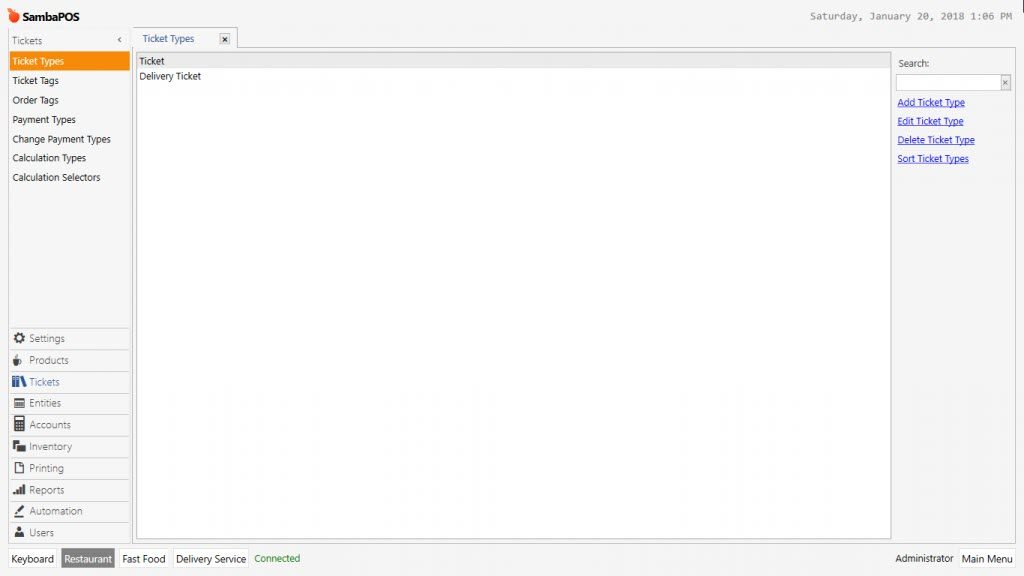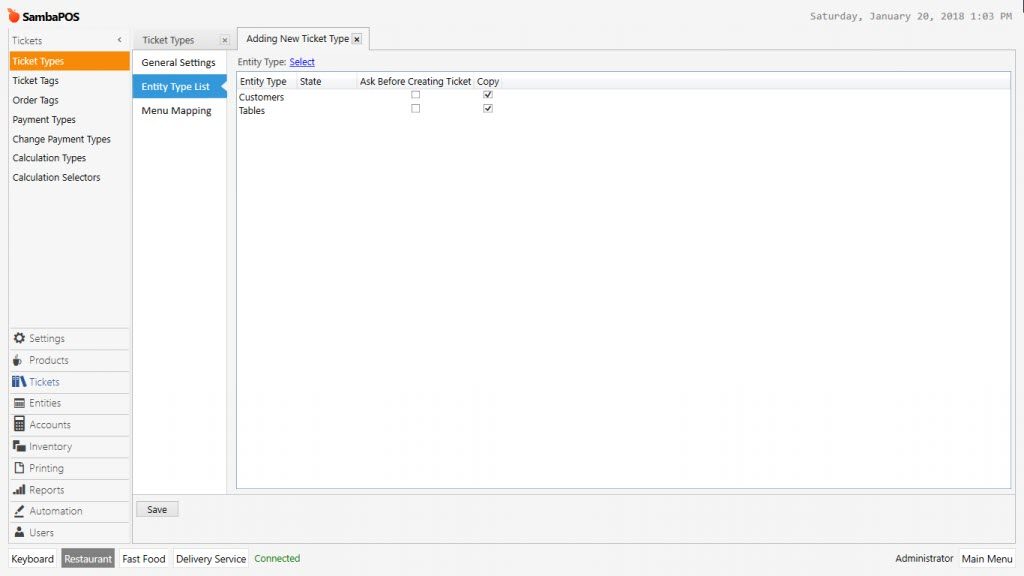2.3.1.a. What is Ticket Type?
What is Ticket?
Selling process of products and services, number, amount, unit, quantities are saved in the tickets. Also process status tracking saved and displayed from here. Tickets; are saved as unit and total of specifications, quantities and prices of sold products and services. It provides the payment method income relation with entities.
What is Ticket Type?
Restaurants have specific sales and order processes. At he same time there could be sales and order types and processes under the different departments in the same restaurant. In the restaurant differentiated sales and order types can be described as A la Carte, Fast Food, Delivery Service, Game Saloon, Concert Saloon.
Create ticket types according to these work processes. While creating working types in the restaurant, SambaPOS gives a flexible and customizable substructure on the tickets by targeting auto control and automation in order to provide the full discipline for the process.
For ticket types, these could be given as example; Restaurant Ticket, Delivery Service Ticket, Fast Food Ticket, Counter Voucher, Scale Voucher, Concert Ticket, Game Ticket, Pool Entry, Queue Voucher.
How to Prepare and Use Ticket Types?
Assign; Menu, Ticket Number Generator, Order Number Generator, Sale Transaction, Tax Type, Order Type for the each document type. You can create independent POS screen designs and functions by assigning ticket types to the departments.
Ticket Type; should be customized for all SambaPOS associating, limiting authorization and roles.
Moslty used and forced ones of them:
- Assign the Ticket Type on entity screens and configure associating settings.
- Ticket Tags can be created according to Ticket Types.
- Order Tags can be created according to Ticket Types.
- Print jobs, Print Templates can be created and associated according to Ticket Types.
- It’s used for associations of Automation commands.
- It’s used on Action Processes and association when creating Automation Rule.
SambaPOS Basic Reports are Ticket Type Centric.


